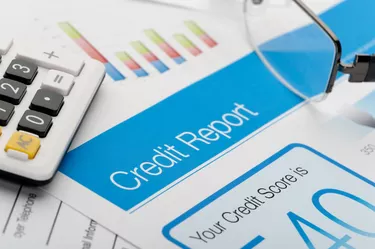
Revolving trade lines are credit products that creditors can use multiple times. These accounts include credit cards and equity lines. The accounts "revolve," meaning the balances fluctuate from month to month based on usage. The term "trade" simply means account. The balance you owe, relative to the maximum line amount, has an impact on your overall credit score.
Credit Accounts
Video of the Day
Credit accounts fall into two categories: amortizing loans and revolving trade lines. Amortizing loans involve a borrower making fixed monthly payments of principal and interest to pay off a debt over a preset period of time. Revolving lines normally have an expiration date, but while they're active, accountholders can use funds as and when they need them. People with revolving lines of credit are normally required to make monthly interest-only payments.
Video of the Day
Types of Credit
Credit scores are based on various factors, including the types of credit accounts you currently use. The type of credit you use accounts for 10 percent of your overall score; people who use different forms of credit receive higher scores than people who only use one type of credit account.
Revolving lines normally have an expiration date, but while they're active, accountholders can use funds as and when they need them.
Certain individuals may have problems managing revolving credit lines because they just make the minimum payment — over time, the balance grows so much that they can no longer afford to pay off the debt. Other people handle revolving lines of credit well but lack the discipline to make fixed loan payments on a timely basis. People who use both types of credit and make payments on time receive the highest scores.
Credit Utilization
The total amount of your outstanding credit debt accounts for 30 percent of your overall credit score. If you have several credit cards with very high balances, then you may be close to 100 percent credit utilization. Credit scores are lower for people with high credit utilization levels than those with low balances because credit bureaus work on the assumption that people who use all available credit are more likely to have cash flow problems than people who seldom use the available trade lines.
Misconceptions
Consumers often attempt to improve their overall credit scores by consolidating revolving trade lines such as credit cards into home equity lines of credit or fixed home loans and then closing the paid-off cards. The average length of the account history accounts for 15 percent of your overall credit score, so although paying down revolving lines improves your score, closing the trade lines actually hurts your score because it reduces your average length of account history.